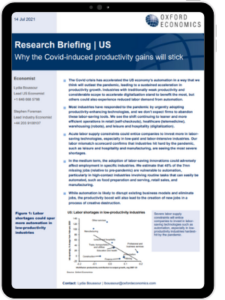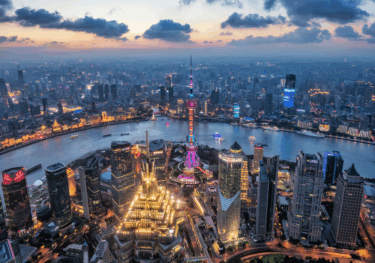US | Why the Covid-induced productivity gains will stick

The Covid crisis has accelerated the US economy’s automation in a way that we think will outlast the pandemic, leading to a sustained acceleration in productivity growth. Industries with traditionally weak productivity and considerable scope to accelerate digitalization stand to benefit the most, but others could also experience reduced labor demand from automation.
What you will learn:
- Most industries have responded to the pandemic by urgently adopting productivity-enhancing technologies, and we don’t expect firms to abandon these labor-saving tools.
- We see the shift continuing to leaner and more efficient operations in retail (self-checkouts), healthcare (telemedicine), warehousing (robots), and leisure and hospitality (digitalization).
- Acute labor supply constraints could entice companies to invest more in labor-saving technologies, especially in low-paid and labor-intensive industries. Our labor mismatch scorecard confirms that industries hit hard by the pandemic, such as leisure and hospitality and manufacturing, are seeing the most severe shortages.
Tags:
Related Services

Post
House prices continue to slide for China’s cities
Research Briefing US | Why the Covid-induced productivity gains will stick While the property market downturn has been universal, the scale and depth has been varied for different cities and regions.
Find Out More
Post
The Construction Productivity Challenge in Australia
Delve into the state of construction productivity in Australia. Understand the factors affecting growth and how innovation can transform the industry for the better.
Find Out More